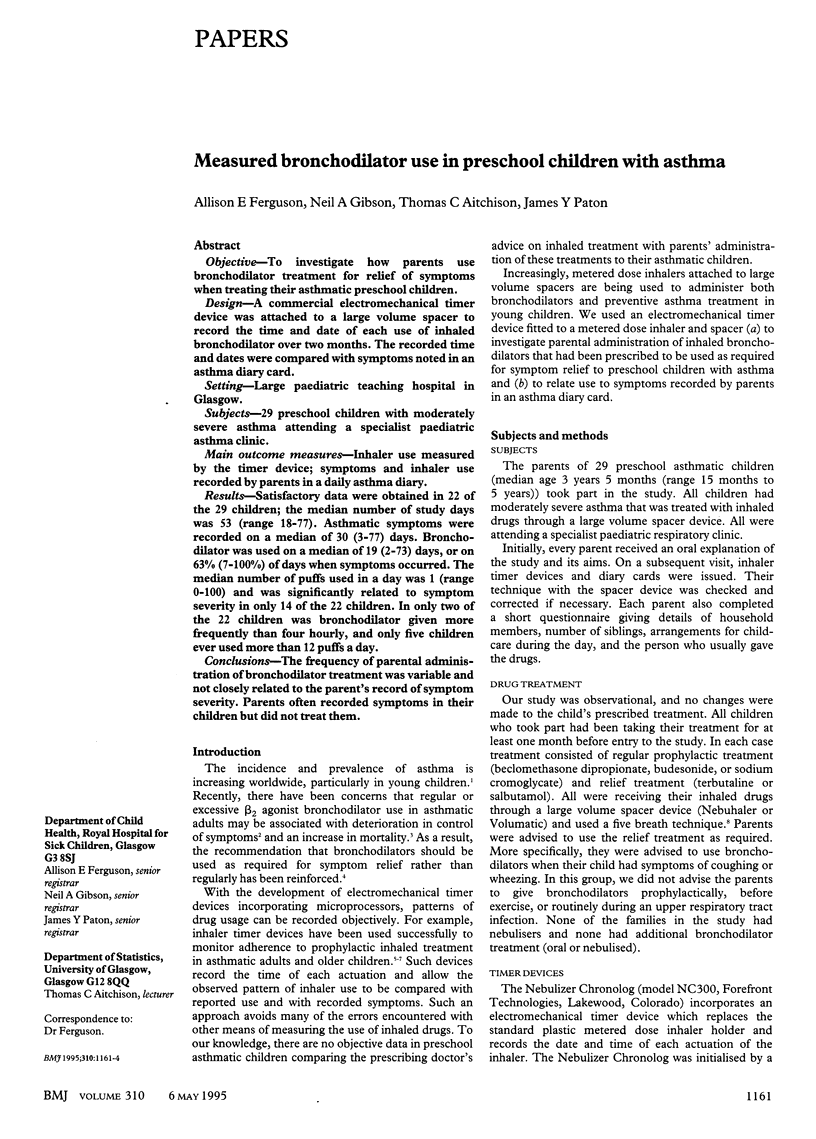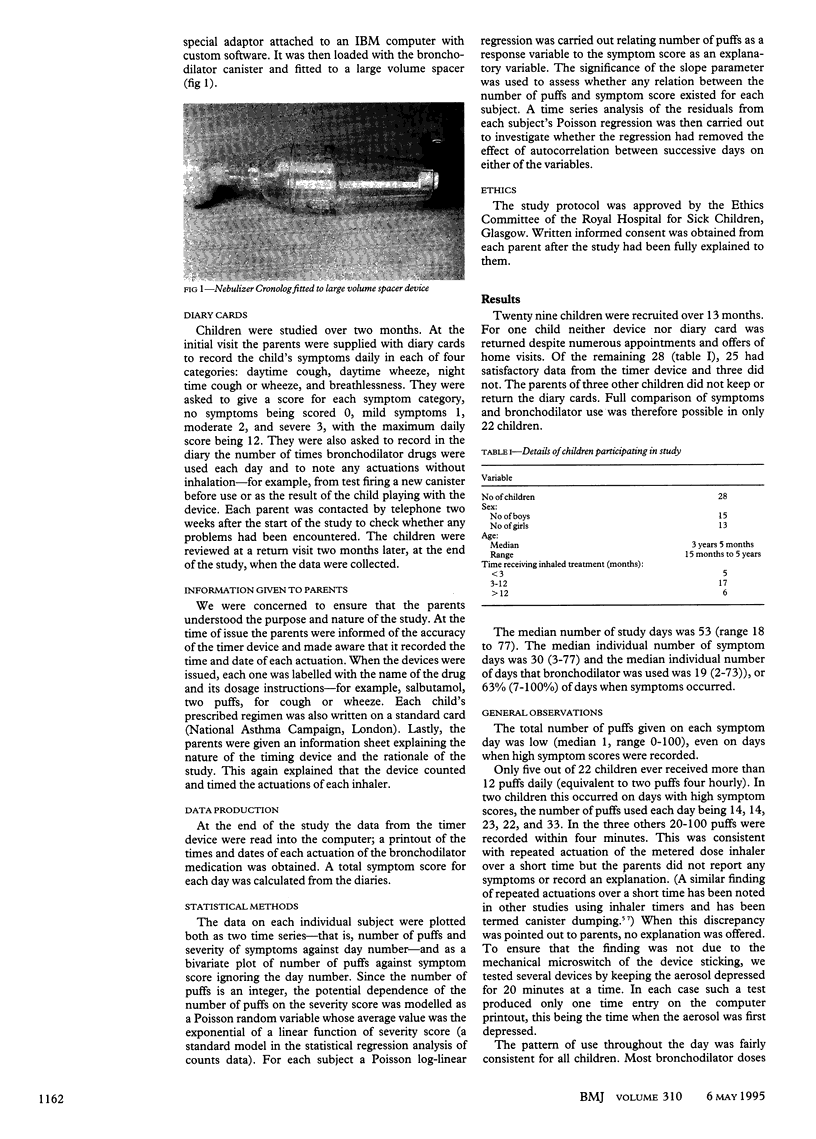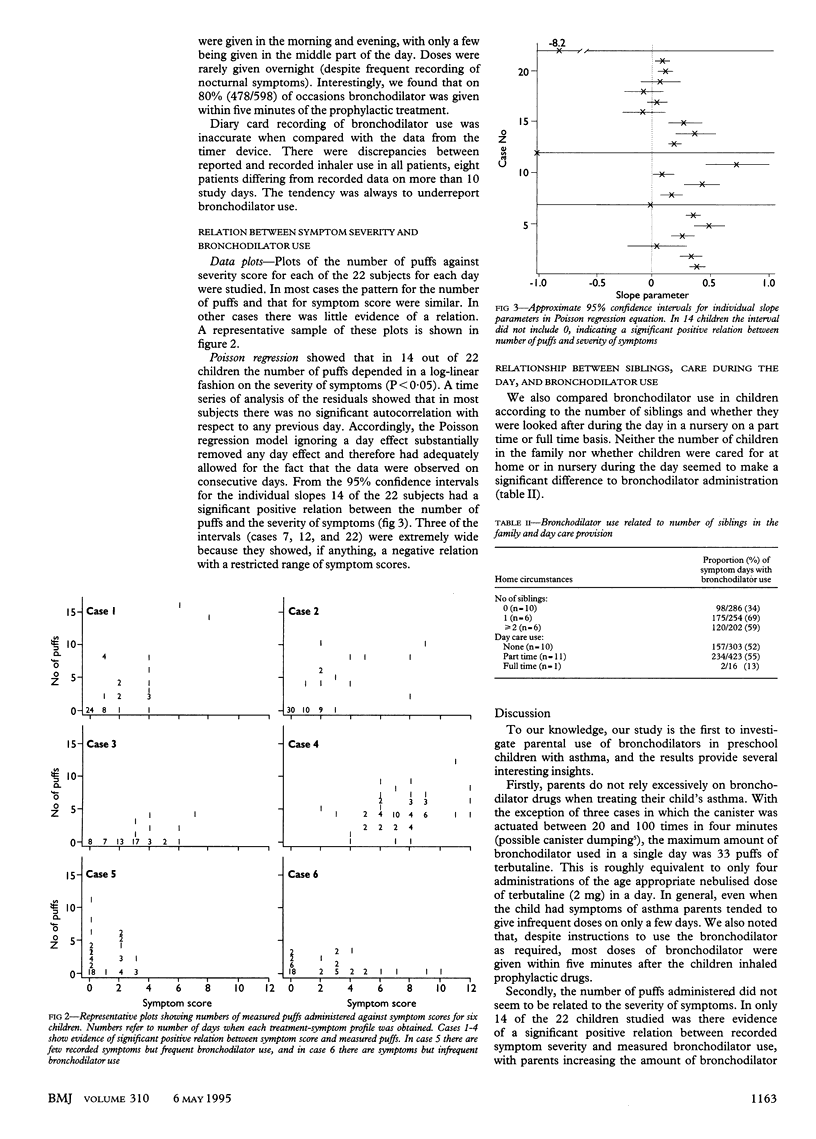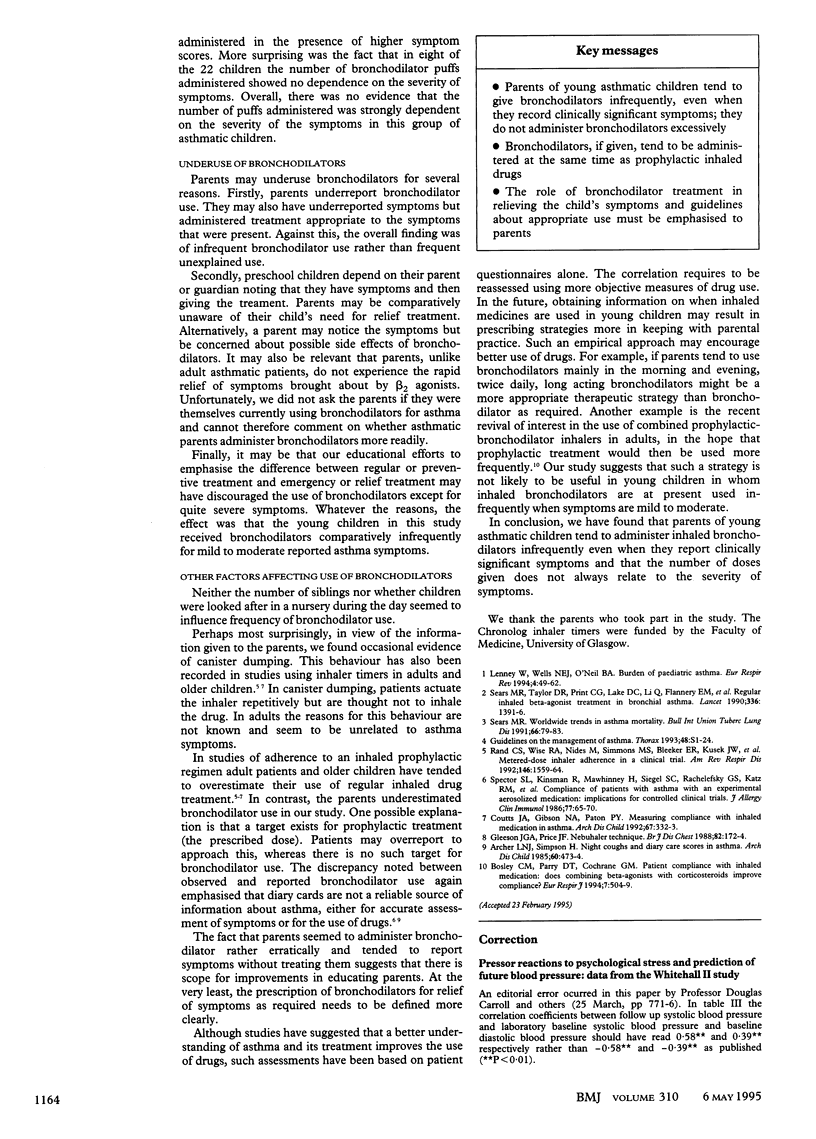Abstract
OBJECTIVE--To investigate how parents use bronchodilator treatment for relief of symptoms when treating their asthmatic preschool children. DESIGN--A commercial electromechanical timer device was attached to a large volume spacer to record the time and date of each use of inhaled bronchodilator over two months. The recorded time and dates were compared with symptoms noted in an asthma diary card. SETTING--Large paediatric teaching hospital in Glasgow. SUBJECTS--29 preschool children with moderately severe asthma attending a specialist paediatric asthma clinic. MAIN OUTCOME MEASURES--Inhaler use measured by the timer device; symptoms and inhaler use recorded by parents in a daily asthma diary. RESULTS--Satisfactory data were obtained in 22 of the 29 children; the median number of study days was 53 (range 18-77). Asthmatic symptoms were recorded on a median of 30 (3-77) days. Bronchodilator was used on a median of 19 (2-73) days, or on 63% (7-100%) of days when symptoms occurred. The median number of puffs used in a day was 1 (range 0-100) and was significantly related to symptom severity in only 14 of the 22 children. In only two of the 22 children was bronchodilator given more frequently than four hourly, and only five children ever used more than 12 puffs a day. CONCLUSIONS--The frequency of parental administration of bronchodilator treatment was variable and not closely related to the parent's record of symptom severity. Parents often recorded symptoms in their children but did not treat them.
Full text
PDF



Images in this article
Selected References
These references are in PubMed. This may not be the complete list of references from this article.
- Archer L. N., Simpson H. Night cough counts and diary card scores in asthma. Arch Dis Child. 1985 May;60(5):473–474. doi: 10.1136/adc.60.5.473. [DOI] [PMC free article] [PubMed] [Google Scholar]
- Bosley C. M., Parry D. T., Cochrane G. M. Patient compliance with inhaled medication: does combining beta-agonists with corticosteroids improve compliance? Eur Respir J. 1994 Mar;7(3):504–509. doi: 10.1183/09031936.94.07030504. [DOI] [PubMed] [Google Scholar]
- Coutts J. A., Gibson N. A., Paton J. Y. Measuring compliance with inhaled medication in asthma. Arch Dis Child. 1992 Mar;67(3):332–333. doi: 10.1136/adc.67.3.332. [DOI] [PMC free article] [PubMed] [Google Scholar]
- Gleeson J. G., Price J. F. Nebuhaler technique. Br J Dis Chest. 1988 Apr;82(2):172–174. doi: 10.1016/0007-0971(88)90039-3. [DOI] [PubMed] [Google Scholar]
- Rand C. S., Wise R. A., Nides M., Simmons M. S., Bleecker E. R., Kusek J. W., Li V. C., Tashkin D. P. Metered-dose inhaler adherence in a clinical trial. Am Rev Respir Dis. 1992 Dec;146(6):1559–1564. doi: 10.1164/ajrccm/146.6.1559. [DOI] [PubMed] [Google Scholar]
- Sears M. R., Taylor D. R., Print C. G., Lake D. C., Li Q. Q., Flannery E. M., Yates D. M., Lucas M. K., Herbison G. P. Regular inhaled beta-agonist treatment in bronchial asthma. Lancet. 1990 Dec 8;336(8728):1391–1396. doi: 10.1016/0140-6736(90)93098-a. [DOI] [PubMed] [Google Scholar]
- Sears M. R. Worldwide trends in asthma mortality. Bull Int Union Tuberc Lung Dis. 1991 Jun-Sep;66(2-3):79–83. [PubMed] [Google Scholar]
- Spector S. L., Kinsman R., Mawhinney H., Siegel S. C., Rachelefsky G. S., Katz R. M., Rohr A. S. Compliance of patients with asthma with an experimental aerosolized medication: implications for controlled clinical trials. J Allergy Clin Immunol. 1986 Jan;77(1 Pt 1):65–70. doi: 10.1016/0091-6749(86)90325-8. [DOI] [PubMed] [Google Scholar]



